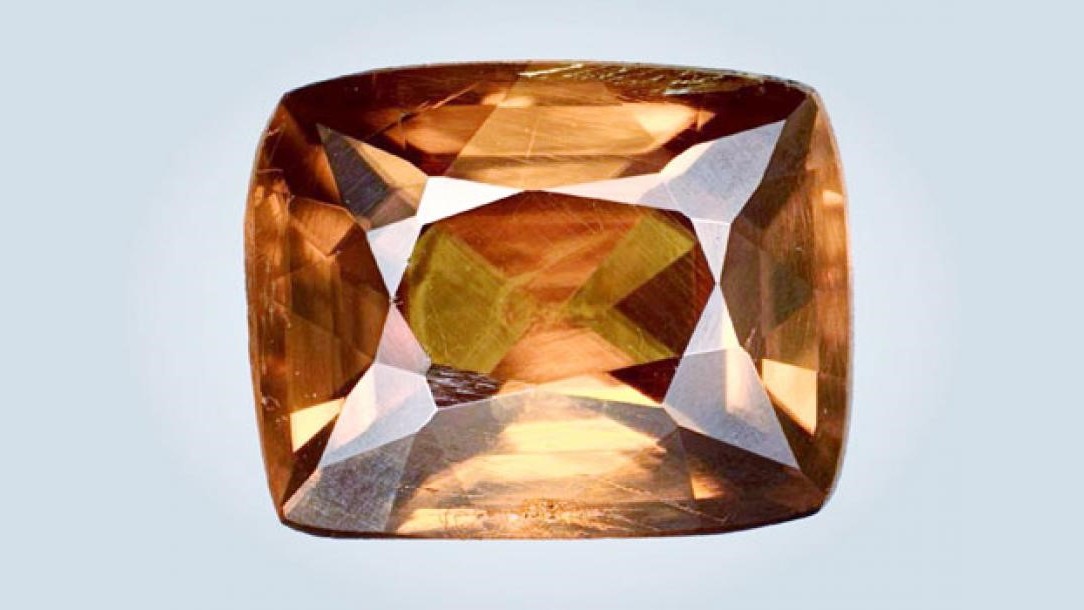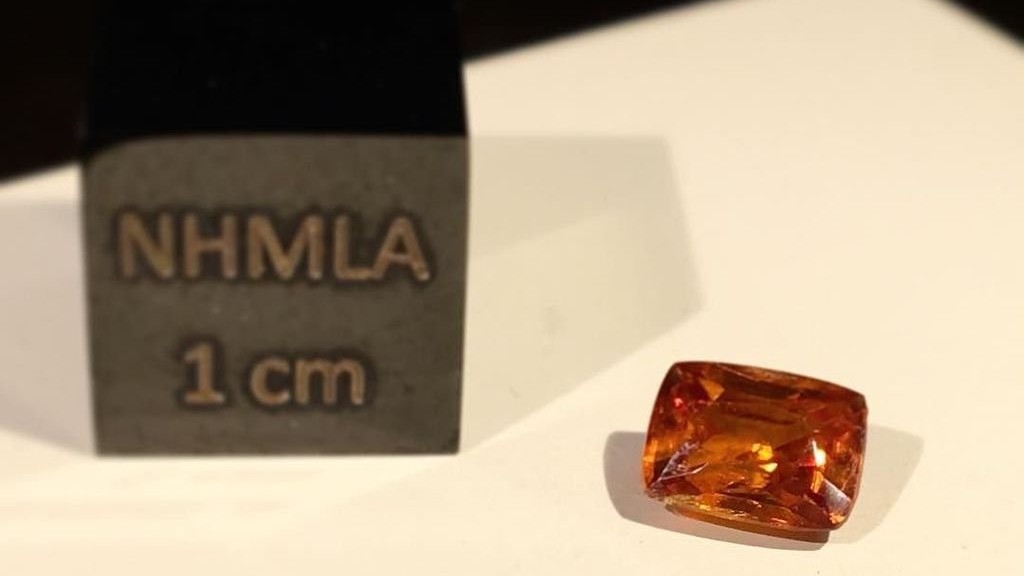What is the rarest mineral on Earth?
There is only one specimen of the rarest mineral on Earth, and it's from Myanmar.

Most human eyes have seen the mystical beauty of quartz, possibly without knowing it is the most common mineral on Earth, but which is the rarest?
Minerals are scattered everywhere on our planet, from glittering flecks in gravel or sand to actual hidden gems. According to the U.S. Geological Society, minerals are naturally occurring elements or compounds that are inorganic, meaning they do not contain carbon. Each type of mineral exhibits order in its internal structure and has a unique chemical makeup. The form a mineral's crystals take, as well as its other physical properties, can vary.
The rarest mineral on Earth is kyawthuite. Only one crystal, found in the Mogok region of Myanmar, is known to exist. Caltech's mineral database describes it as a small (1.61-karat) deep orange gemstone that the International Mineralogical Association officially recognized in 2015.
However, little is known about kyawthuite, so let's move on to the second-rarest mineral in existence. This is painite, which appears as deep red hexagonal crystals (though there are some pinkish exceptions). Though painite is now more easily found than it used to be, this mineral is still rare, and its chemical structure makes it something of a scientific enigma.
Related: How long does it take to make petrified wood?
In 1952, the English gem collector and dealer Arthur Pain acquired two crimson crystals in Myanmar, according to George Rossman, a professor of mineralogy at CalTech, who has been researching painite since the 1980s and maintains an extensive database of all the samples he has analyzed microscopically.
Pain thought the crystals were rubies, which the region is famed for, but unbeknownst to him they were actually something far rarer.
Get the world’s most fascinating discoveries delivered straight to your inbox.
Painite (which took on Arthur's surname) is sometimes unearthed along with rubies and other gemstones. That explains why Pain assumed the crystals were rubies when, according to Rossman, he donated them to the British Museum in 1954 for further study. Another painite sample from Myanmar surfaced in 1979, and until 2001, those three crystals were the only known specimens of painite in the world.
The very first painite crystal discovered, known as painite #1, was later analyzed by Rossman. His latest painite study was published in Mineralogical Magazine in 2018.
"I conducted [studies] of the [first] sample," he told Live Science. "[My results] became the standards by which further discoveries of painite were confirmed."
It was through this research that Rossman determined which elements make up painite. With infrared spectroscopy, infrared radiation is used to identify elements based on how they absorb, reflect and emit that light. With Raman spectroscopy, a laser is used to scatter visible, infrared or ultraviolet light, which makes the molecules give off unique vibrations that make them identifiable.
Rossman also found there was an error in the chemical makeup originally determined by scientists at the British Museum. While they had correctly identified aluminum, boron, calcium and oxygen, the element zirconium was missing. Another thing Rossman found out was what gave painite its reddish hue; It has trace amounts of vanadium and chromium that might make it deceptively appear like a ruby.
But what makes painite so rare? For one, it is only found in Myanmar, but the real reason lies in its formation. Painite is a borate crystal, meaning it contains boron. It also contains zirconium. Boron has a notoriously difficult time bonding with zirconium. In fact, painite is the only mineral in which the two have been found bonded in nature. While the reason is still unclear, zirconium and boron have not been found together in significant concentrations, as Rossman said. It is also thought that these elements may not be very stable together compared with other elements they could bond with.
"To my knowledge, no one has done a serious study of what it takes to form painite," Rossman said. "I know of no attempt to synthesize it in a lab."
Related: How do we tell the difference between geologic ages?
Why Myanmar?
What Rossman does have an idea of is why painite and so many other gems, such as kyawthuite, are found in Myanmar. When the ancient supercontinent of Gondwana began to split about 180 million years ago, India crept north and collided with what is now South Asia. Pressure and heat from the collision formed a treasure trove of rocks, many of them gemstones. He thinks the boron in painite and other borate minerals possibly came from shallow seas around the newly formed land mass.
Rossman has had many crystals suspected to be painite sent to him for identification. Some have been hidden in plain sight for decades, as they were often stashed in bags of rough gemstones or in the hands of dealers and collectors who misidentified them.
Painite suitable for luxe jewelry is hard to come by and valued as high as $60,000 a carat, Rossman said. What determines the price can be subjective, but the fewer flaws, the better.
It should be noted that there are ethical concerns about mining in Myanmar, also famous for other gemstones and specimens of tiny prehistoric creatures trapped in amber. Human Rights Watch raises awareness about human rights abuses from the military government, which profits from the mining industry, which has unsafe and disease-infested mines, forced labor and child labor. Some jewelry companies refuse to purchase gems mined there for this reason and some scientists decline to study specimens from this country.
Painite is now more common than it once was. Multiple crystals began to appear in 2005, all within that year, and most painites can now be found in Myanmar's Wet Loo and Therein Taung regions.
Though painite no longer wears the crown of rarest mineral, it's still a real gem.

Elizabeth Rayne is a contributing writer for Live Science. Her work has appeared in SYFY WIRE, Forbidden Futures, Grunge and Den of Geek. She holds a bachelor of arts in English literature from Fairfield University in Connecticut and a master's degree in English writing from Fordham University, and most enjoys writing about space, along with biology, chemistry, physics, archaeology and paleontology.





